Can Hemorrhoids Cause Cramping: Comparing Colon Cancer and Hemorrhoid Symptoms
What are the key differences between hemorrhoid and colon cancer symptoms. How can you distinguish between these two conditions. When should you seek medical attention for rectal bleeding or abdominal pain.
Understanding Hemorrhoids: Causes, Types, and Symptoms
Hemorrhoids are swollen veins located in the anus and rectum area. They’re incredibly common, affecting approximately half of all adults by age 50. But what exactly causes these uncomfortable swellings?
While the exact cause remains unknown, hemorrhoids typically occur when there’s increased pressure in the anal area. This can happen due to:
- Straining during bowel movements
- Pregnancy
- Aging
- Prolonged sitting
- Chronic constipation or diarrhea
- Heavy lifting
Hemorrhoids can be internal (inside the rectum or anus) or external (on or protruding from the rectum or anus). The symptoms can range from mild discomfort to significant pain, itchiness, and bleeding.

Common Symptoms of Hemorrhoids
If you’re experiencing hemorrhoids, you might notice the following symptoms:
- Itching or irritation in the anal area
- Bright red blood on toilet tissue, stool, or in the toilet bowl
- Pain or discomfort, especially during bowel movements
- Sensitive or painful lump(s) on or near your anus
Is bleeding always a sign of hemorrhoids? While bleeding can be a symptom of hemorrhoids, it’s important to note that rectal bleeding should always be investigated by a doctor to rule out more serious conditions.
Colon Cancer: Understanding the Signs and Symptoms
Colon cancer, also known as colorectal cancer, is a malignant tumor that arises from the inner wall of the large intestine. Unlike hemorrhoids, colon cancer is a serious condition that requires immediate medical attention.
The signs and symptoms of colon cancer can be subtle and easily overlooked. In its early stages, colon cancer may not present any symptoms at all. This is why regular screening is crucial, especially for those over 45 years old.

Common Symptoms of Colon Cancer
While symptoms can vary, common signs of colon cancer include:
- Rectal bleeding or blood in the stool
- Dark-colored stool
- Changes in bowel habits (diarrhea, constipation, or narrowing of the stool) lasting more than a few days
- A persistent feeling of needing to have a bowel movement
- Cramping or abdominal pain
- Weakness and fatigue
- Unintended weight loss
Can colon cancer cause cramping? Yes, abdominal cramping or pain can be a symptom of colon cancer. However, it’s important to note that many of these symptoms can also be caused by other, less serious conditions.
Differentiating Between Hemorrhoids and Colon Cancer
Given that hemorrhoids and colon cancer can share some similar symptoms, how can you tell them apart? While only a medical professional can provide a definitive diagnosis, there are some key differences to be aware of.
Bleeding Patterns
Hemorrhoid bleeding typically results in bright red blood on toilet paper or in the toilet bowl. This blood comes from the surface of the hemorrhoids and is usually painless.

Colon cancer bleeding, on the other hand, may result in darker, tar-like stools or blood mixed with the stool. This is because the blood has traveled further through the digestive tract.
Pain and Discomfort
Hemorrhoids often cause localized pain or discomfort in the anal area, especially during bowel movements. You might also experience itching or irritation.
Colon cancer pain is typically more generalized and may include abdominal cramping or persistent discomfort. It’s not usually associated with itching or localized anal pain.
Changes in Bowel Habits
While hemorrhoids can cause some changes in bowel movements, these are usually temporary and related to pain or discomfort during defecation.
Colon cancer, however, may cause more persistent changes in bowel habits, such as ongoing diarrhea, constipation, or a change in stool consistency.
Treatment Options for Hemorrhoids
In many cases, hemorrhoid symptoms will resolve on their own within a few days. However, there are several treatments that can help alleviate discomfort:
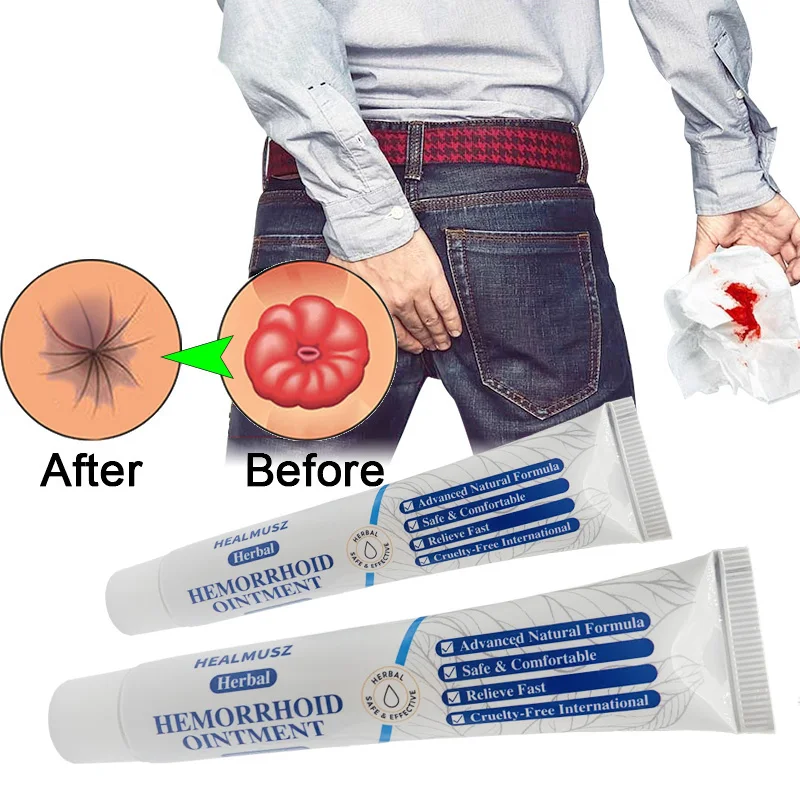
- Sitz baths: Sitting in a lukewarm bath can help reduce swelling and discomfort
- Alternating moist heat with ice
- Limiting extended periods of sitting
- Over-the-counter topical creams and suppositories
- Using scent- and dye-free toilet paper
- Keeping the anal area clean
For more severe cases, medical procedures such as rubber band ligation or hemorrhoidectomy may be necessary.
Diagnosis and Treatment of Colon Cancer
If colon cancer is suspected, doctors typically use sigmoidoscopy or colonoscopy to examine the colon for growths or polyps. If a growth is found, a biopsy will be taken to determine if it’s cancerous.
Treatment for colon cancer depends on how early it’s detected, but may include:
- Surgery to remove the tumor
- Radiation therapy
- Chemotherapy
- Targeted therapies
Are there risk factors for colon cancer? Yes, risk factors include a family history of colon polyps and long-standing inflammation of the large intestine. However, regular screening can help detect colon cancer early, when it’s most treatable.

When to Seek Medical Attention
While hemorrhoids are generally not dangerous, it’s important to seek medical attention if you experience:
- Persistent bleeding
- Severe pain
- Changes in bowel habits that last more than a few days
- Dark, tarry stools
- Unexplained weight loss
These symptoms could indicate a more serious condition, such as colon cancer, and should be evaluated by a healthcare professional.
The Importance of Regular Screening
Given that early-stage colon cancer often presents no symptoms, regular screening is crucial. The American Cancer Society recommends starting regular screenings at age 45 for individuals at average risk.
Screening methods may include:
- Colonoscopy
- Fecal immunochemical test (FIT)
- Stool DNA test
- Flexible sigmoidoscopy
Your doctor can help determine which screening method is most appropriate for you based on your individual risk factors and medical history.
Prevention Strategies for Hemorrhoids and Colon Health
While not all cases of hemorrhoids or colon cancer can be prevented, there are steps you can take to promote overall colon health and reduce your risk:

- Eat a diet high in fiber and low in processed foods
- Stay hydrated by drinking plenty of water
- Exercise regularly to promote healthy bowel movements
- Avoid straining during bowel movements
- Don’t ignore the urge to have a bowel movement
- Maintain a healthy weight
- Limit alcohol consumption
- Quit smoking
By adopting these healthy lifestyle habits, you can help maintain good colon health and potentially reduce your risk of both hemorrhoids and colon cancer.
Remember, while hemorrhoids can cause discomfort, they’re generally not serious. However, any persistent symptoms or changes in bowel habits should be evaluated by a healthcare professional to rule out more serious conditions like colon cancer. Regular screenings and open communication with your doctor are key to maintaining your colon health.
Is It Hemorrhoids or Colon Cancer?
Although hemorrhoids and colon cancer are two very different conditions, they can share similar symptoms. This guide will help you learn about the different signs.
Noticing blood in your stool for the first time is understandably alarming. The good news is that it’s likely that blood in your stool is an indication of hemorrhoids, which while not much fun, aren’t generally a serious medical condition.
Hemorrhoids are actually swollen veins located in the anus and rectum area, and they’re quite common: Approximately half of all adults experience hemorrhoids by the age of 50. They can be internal (inside the rectum or anus) or external (on, or protruding from, the rectum or anus), and symptoms can range from no or mild discomfort to significant pain, itchiness and bleeding.
While the exact cause of hemorrhoids is unknown, they’re most likely to occur when there’s an increase in pressure in the area, such as when you strain to have a bowel movement, for example. They’re more likely to occur during pregnancy, aging, sitting for long periods of time, chronic constipation or diarrhea, straining or lifting heavy objects.
They’re more likely to occur during pregnancy, aging, sitting for long periods of time, chronic constipation or diarrhea, straining or lifting heavy objects.
Hemorrhoids usually aren’t dangerous, and in many cases, the symptoms will go away within a few days.
Here are some of the most common signs and symptoms of hemorrhoids:
- Itching or irritation in the anal area
- Bright red blood on toilet tissue, stool or in the toilet bowl
- Pain or discomfort, especially during bowel movements
- A sensitive or painful lump(s) on or near your anus
To relieve symptoms, doctors recommend sitting in a lukewarm bath, alternating moist heat with ice and limiting extended periods of time spent sitting. There are also over-the-counter topical creams and suppositories to battle the symptoms. Patients are also advised to use scent- and dye-free toilet paper and to keep the area clean.
Colon cancer (also known as colorectal cancer) is a malignant tumor, arising from the inner wall of the large intestine.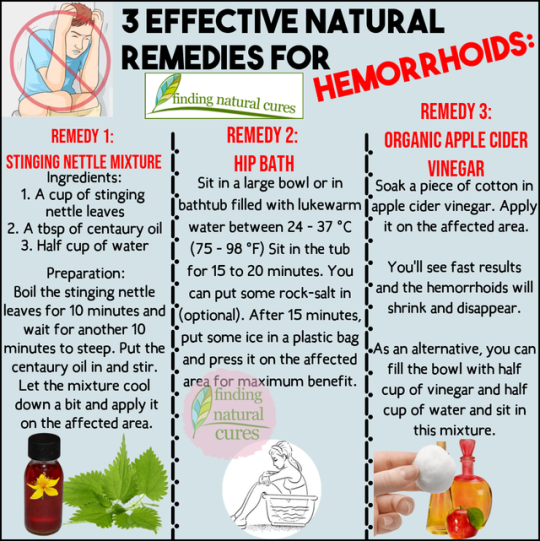 Signs and symptoms of colon cancer are often not specific, which means they may be mistaken for a number of different conditions. When colon cancer is detected in its early stages, there may be no symptoms present at all.
Signs and symptoms of colon cancer are often not specific, which means they may be mistaken for a number of different conditions. When colon cancer is detected in its early stages, there may be no symptoms present at all.
The usual symptoms and signs of colon cancer are:
- Rectal bleeding or blood in the stool
- Dark-colored stool
- A change in bowel habits, such as diarrhea, constipation or narrowing of the stool that lasts for more than a few days
- A feeling that you need to have a bowel movement that is not relieved by having one
- Cramping or abdominal (belly) pain
- Weakness and fatigue
- Unintended weight loss
In most cases, people who have these symptoms do not have cancer. Still, if you’re experiencing any of these symptoms, you should contact your doctor, so the cause can be found and treated.
To check for colon cancer, physicians use sigmoidoscopy or colonoscopy to look for growths (polyps) in the colon.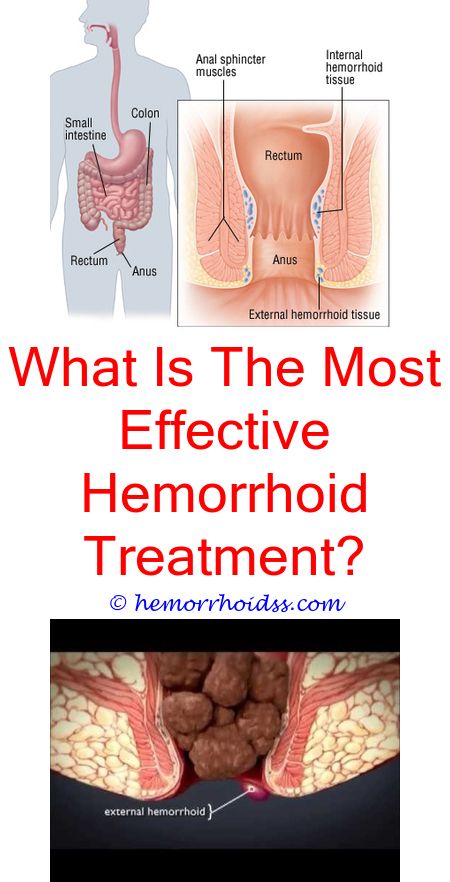 If a growth is found, the physician will take a biopsy to determine whether the growth is cancerous. If you are diagnosed with colon cancer, treatment depends on how early it is found, but it may include surgery, radiation, chemotherapy and targeted therapies. Risk factors for colorectal cancer include a family history of colon polyps (small clump of cells that form on the lining of the colon) and long-standing inflammation of the large intestine.
If a growth is found, the physician will take a biopsy to determine whether the growth is cancerous. If you are diagnosed with colon cancer, treatment depends on how early it is found, but it may include surgery, radiation, chemotherapy and targeted therapies. Risk factors for colorectal cancer include a family history of colon polyps (small clump of cells that form on the lining of the colon) and long-standing inflammation of the large intestine.
Because the symptoms are often subtle and easily overlooked, colon cancer screening is very important. In fact, the American Cancer Society recommends starting regular screenings at age 45.
Topics
bleeding
colon cancer
colonoscopy
hemorrhoids
itching
pain
polyps
screenings
Ramin Zahed
Ramin Zahed is a Los Angeles-based author and journalist.
Signs of Hemorrhoids: Types and Diagnosis
What are hemorrhoids?
Hemorrhoids are clusters of tissue containing enlarged blood vessels around the anus and lower rectum. When this vascular tissue becomes swollen, similar to varicose veins, they can cause problems such as:
When this vascular tissue becomes swollen, similar to varicose veins, they can cause problems such as:
- Bleeding
- Itching
- Pain
This condition is what most people know as hemorrhoids or piles. 1
Hemorrhoids can form inside or outside the anus, and internal hemorrhoids can prolapse, which is when the swellings become visible outside of the anus.
Hemorrhoids can be painless, but in certain circumstances they can become painful. Hemorrhoids that bleed may look alarming, but they are generally harmless. However, rectal bleeding always should be investigated by a doctor to rule out more serious conditions that may require specific treatment, such as bowel polyps, anal fissure or an anal fistula. 12
If there is no rectal bleeding, but the other symptoms listed on this resource seem familiar, try a symptom assessment on the free Ada app. Or find out more about how our symptom checker works before you try it for yourself.
Around half of American adults will experience signs and symptoms of hemorrhoids by the age of 50. Simple treatments, such as sitz baths and topical hemorrhoid creams, will relieve the most unpleasant symptoms, although will likely not make the hemorrhoid itself go away for good.
Hemorrhoids are not contagious and are not usually associated with further health risks. In rare cases, however, a person may experience severe bleeding. In very rare cases, this could turn into iron-deficiency anemia if not addressed. 3 There is also a very slight risk of other complications such as infection from an external hemorrhoid. 4
Read more about hemorrhoids »
Hemorrhoids can form both inside the rectum and under the skin of the anus (external hemorrhoids). Internal and external hemorrhoids share some common symptoms; both types can bleed, for example. Other similarities include: 5
- Both internal and external hemorrhoids can cause leakage of feces and anal mucus
- Hemorrhoids can also make cleaning the anus after a bowel movement more difficult.
 Due to this, both types of hemorrhoid may produce a bad smell
Due to this, both types of hemorrhoid may produce a bad smell
Leaking feces and anal mucus can also irritate the anus. This can cause the anus to itch, a condition known as pruritus ani. 6
Signs of internal hemorrhoids
Internal hemorrhoids are the most common type of hemorrhoid. These swellings develop inside the anal canal.
Small hemorrhoids stay inside the anal canal and cannot be seen or felt by the person affected by them. Larger hemorrhoids may fall outside the anus in a process called prolapse, often during a bowel movement or while the buttocks are being wiped. Hemorrhoids which prolapse may go back inside the anal canal on their own or may be pushed back in by the affected person.
Read more about hemorrhoids ».
Internal hemorrhoids generally cause no pain. Noticeable signs and symptoms of internal hemorrhoids include: 7
- Bright red blood in feces, on toilet paper after wiping, or in the toilet bowl
- Bodily tissue falling outside the anus, i.
 e., prolapse
e., prolapse - Mucal or fecal discharge
- A feeling of not having fully evacuated the bowels
Additional signs of a prolapsed internal hemorrhoid include:
- Itching around the anus, i.e.,pruritus ani
- A lump felt outside the anus
An internal hemorrhoid cannot be seen unless it prolapses. A prolapsed internal hemorrhoid has the following characteristics: 8
- Approximately the size of a grape
- A rubbery texture
- Soft to the touch
- Skin colored or of reddish appearance
- Can usually be pushed inside the anus
- There may be more than one
If an internal hemorrhoid cannot be pushed back into the anus, it may become trapped by the sphincter muscle. This is called a strangulated hemorrhoid and can cause severe pain. 9
A prolapsed hemorrhoid is different to a rectal prolapse. In rectal prolapse, the rectum itself falls out of the anus. 10
Signs of external hemorrhoids
External hemorrhoids are swellings that form under the anal skin and become prominent on or around the outside of the anus.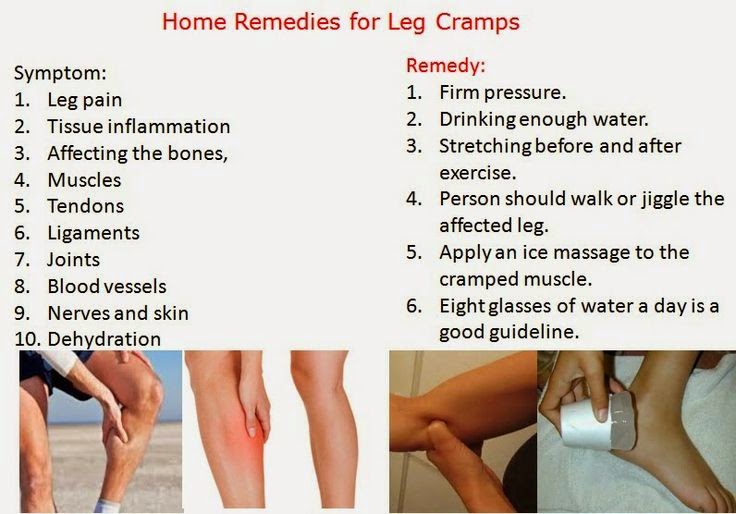 8 11] 12
8 11] 12
- Sudden onset of pain
- Constant pain following sudden onset of pain
Thrombosed hemorrhoids have the following characteristics:
- Blue or purple in color
- A lump or bulge
- Firm to the touch
A thrombosed hemorrhoid will often hurt, but are not generally dangerous.
Signs of anal skin tags
Skin tags are not hemorrhoids, but they can be left behind after an external hemorrhoid has healed. Skin tags appear after the skin is stretched, such as by an external hemorrhoid. Once the hemorrhoid has resolved itself, the skin may remain stretched, resulting in a skin tag. 13
Skin tags are benign, but it is advisable to get any lump checked by a doctor to get confirmation of that.
Skin tags have the following characteristics: 714
- Small bumps or raised areas
- Soft
- Scaly.
Feeling unwell? Get a symptom assessment with the free Ada app. Or find out more about how our symptom checker works before you try it for yourself.
Or find out more about how our symptom checker works before you try it for yourself.
Pregnancy creates more pressure in the abdomen than usual, which can cause vascular tissue in the rectum and anus to swell. Hemorrhoids are common in the third trimester of pregnancy and around a third of pregnant people experience them. It is also common to develop hemorrhoids during childbirth.
Hemorrhoids in pregnancy develop the same way as non-pregnancy hemorrhoids and can be internal, external or become thrombosed. Most cases of hemorrhoids in pregnancy resolve after birth. 15
Some common signs of hemorrhoids include:
- Bleeding from the anus
- Pain around the anus
- Anal itching
- Lump near the anus
- Bad smell around the anus
However, these signs can also occur in some other conditions. If feeling unwell and unsure of the cause, then try a symptom assessment on the Ada app.
Bleeding from the anus
A common sign of hemorrhoids is bleeding from the anus.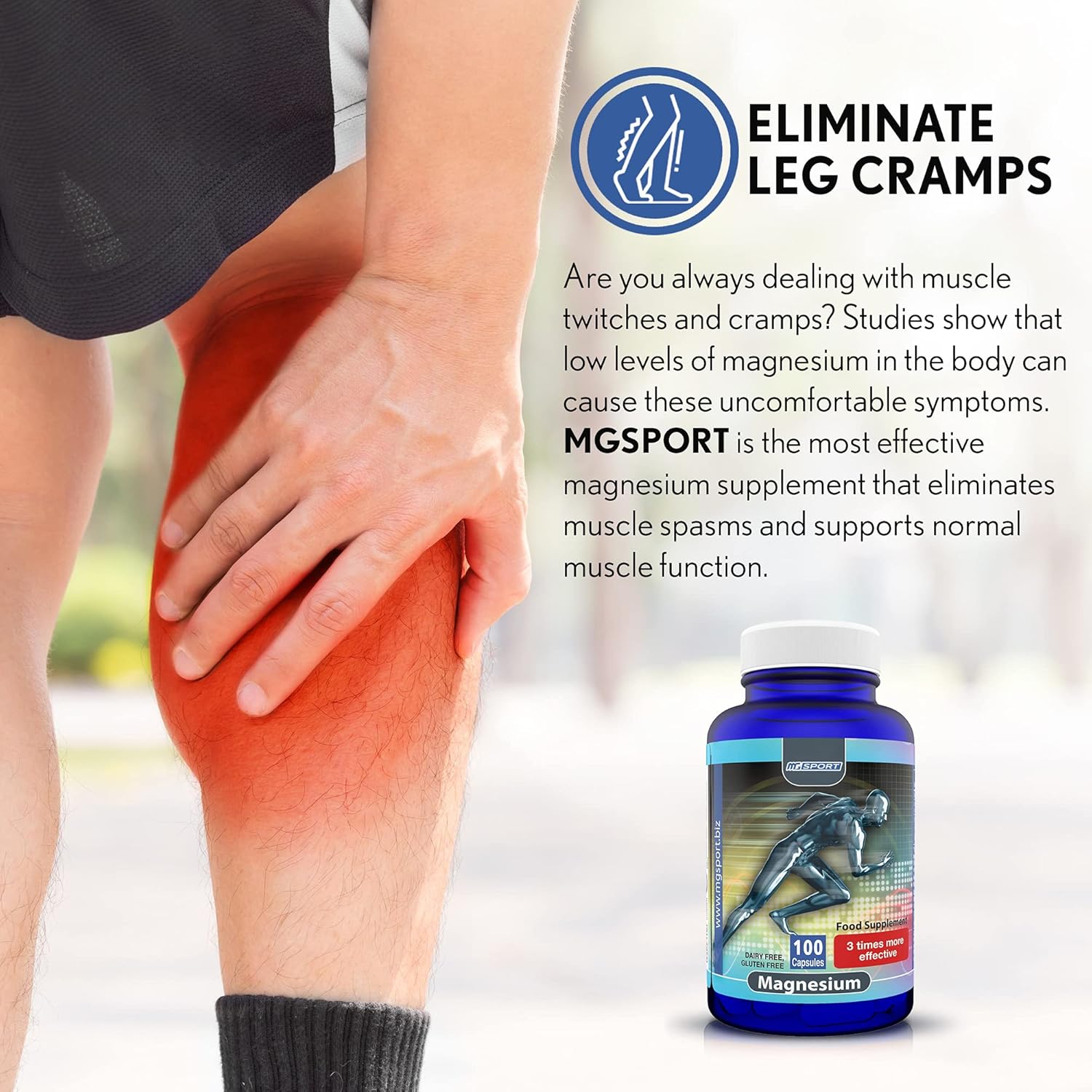 Blood from hemorrhoids is likely to be a brighter red because it comes directly from arteries or veins. The blood can be found:
Blood from hemorrhoids is likely to be a brighter red because it comes directly from arteries or veins. The blood can be found:
- On toilet paper after wiping
- In the toilet bowl
- On feces
Anal bleeding is a symptom of several other conditions, including:
Anal fissure, anal abscess and anal fistula
Bright red blood can also be a sign of an anal fissure, anal abscess and/or anal fistula.
- An anal fissure is a small tear or sore in the skin of the anal canal
- An anal abscess is a pocket near the anus filled with pus
- An anal fistula is a tunnel that runs from the end of the bowel to the skin around the anus
Symptoms of these conditions that are not shared with hemorrhoids include: 1617
- Anal fissure can cause sharp pain during and after passing a stool, while hemorrhoid pain is normally less severe
- An anal abscess can cause a firm, warm, tender, non-thrombosed lump around the anus.
 Abscesses may sometimes cause fever
Abscesses may sometimes cause fever - Anal fistula commonly forms after a previous abscess
Colorectal polyps
Polyps are another type of growth that can be found in similar parts of the body to hemorrhoids. A polyp in the colon or rectum can also cause bleeding. In the case of colorectal polyps, blood can sometimes be seen in the feces. If a person has polyps they may also experience:
- Abdominal pain
- Mucus from the anus
- A change in bowel habits
Polyps are often non-cancerous growths when they are found in, e.g., colonoscopy screenings, but can also develop into colorectal cancer and should therefore be properly examined and treated by a medical doctor. 18
Colon cancer and rectal cancer
Bleeding from the anus can also be a sign of colon cancer or rectal cancer. Symptoms of colorectal cancer include finding bright red blood on the rectum or dark blood mixed in with feces.
If a person has symptoms or suspects they may be affected by colorectal cancer, they should see a doctor immediately. Other signs of colorectal cancer include: 192021
- Changes in bowel habits, such as having diarrhea or being constipated
- A feeling of needing a bowel movement that does not go away after having one
- Unexplained and/or unintended weight loss
- Tiredness or feeling weaker than normal
- Pain from gas, bloating, cramps or a feeling of being full
Colorectal cancer may not show early signs, so in the U.S. the current guidelines are that regular screening should begin at age 50. 2223 For those at increased risk of colorectal cancer, e.g., people with a family history of the condition, doctors may recommend that screening begins at an earlier age, usually around 45.
The American Cancer Society even argues that regular screening should begin for everyone, not just high risk groups, once they reach 45 and even earlier for people with high risk for colon cancer. 24 In the United Kingdom, the National Health Service recommends regular screening from age 55. ref35
24 In the United Kingdom, the National Health Service recommends regular screening from age 55. ref35
The conversation around these guidelines is continually evolving. It is generally recommended to see a physician for regular health check-ups and in case of any doubt, for a proper diagnostic work-up, even if someone is younger.
Read more about colorectal cancer »
Anal cancer
Bleeding from the anus can also be a sign of anal cancer. Bright red blood may come from the rectum or anus, or may be visible in feces. If a person has symptoms of anal cancer they should see a doctor immediately. Other signs of anal cancer include: 2526
- Pain around the anus
- Itching around the anus, i.e.,pruritus ani
- A lump near the anus
- Mucus discharge or feces leaking from the anus
- Change in bowel habits, such as having diarrhea
Anal cancer is rare. The risk of a person in the U.S. being diagnosed with the condition at some point in their lifetime is about one in 500, which is much rarer than people affected by colorectal cancer.
The risk of a person in the U.S. being diagnosed with the condition at some point in their lifetime is about one in 500, which is much rarer than people affected by colorectal cancer.
Read more about anal cancer »
Pain around the anus
Hemorrhoids can be painful if a prolapsed hemorrhoid becomes trapped by the anal sphincter muscle or an external hemorrhoid becomes thrombosed. Other potential causes for pain in this part of the body include:
Anal abscess
Pain that is constant and very often throbbing around the anus is also a sign of anal abscess. Anal abscesses are most often caused by infection, for example, of glands surrounding the anus, so fever may also be present. 28
Anal fistula
An anal fistula may cause mild pain around the anus that comes and goes. The pain from anal fistulas is more pronounced when sitting down, having a bowel movement or when coughing. Anal fistulas most commonly form following an anal abscess. 28
Anal cancer
Pain around the anus can also be a sign of anal cancer. If a person suspects they have symptoms of anal cancer, they should see a doctor immediately.
If a person suspects they have symptoms of anal cancer, they should see a doctor immediately.
Anal itching
A sign of hemorrhoids can be itching around the anus, also known as pruritus ani. However, there are several other conditions and causes that can create the symptoms of an itchy anus.
Anal fistula
Itching around the anus can be caused by an anal fistula. An anal fistula is also accompanied by a constant, throbbing pain and is often the result of a previous anal abscess. 1729
Pinworms
Pinworms are small parasites that can live in a human colon or rectum. These worms can be a cause of itching around the anus, particularly at night. Pinworms lay their eggs on the skin around the anus, and worms may be seen in stools. These parasites affect children far more often than adults. 30
Anal cancer
Anal itching can be a sign of anal cancer. Medical attention should be sought promptly in all cases where a person suspects any symptoms of anal cancer.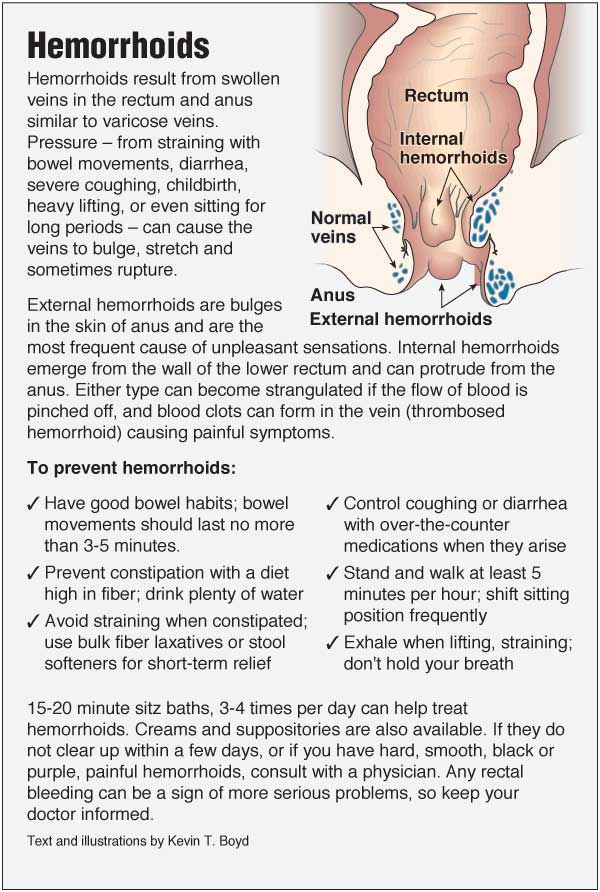
Other causes for anal itching
Anal itching can also be caused by: 31
- Irritants such as soap or laundry detergent
- Not cleaning the anal area properly
- Moisture from sweat
- Certain foods, including coffee, tea, chocolate, spicy foods and citrus fruit
- Long-term use or non-prescribed use of topical steroids applied to the anus
Lump near the anus
External hemorrhoids and skin tags will feel like a small lump near the anus. Lumps can also appear around the anus as part of some other conditions, including:
Anal fissures
Anal fissures sometimes produce small lumps or skin tags near the anus. If a person has an anal fissure, they will also experience pain during and after passing a stool. 16
Anal cancer
A lump near the anus could be a sign of anal cancer. Seek prompt medical attention in all cases where anal cancer is suspected.
Bad smell around the anus
Hemorrhoids can cause feces and mucus to leak out of the anus, which may lead to a foul smell. There may also be other causes for this though, among them:
There may also be other causes for this though, among them:
Anal fistula or anal abscess
An anal fistula can result in a bad smelling discharge from the anus. Another symptom of anal fistula is a mild, intermittent pain around the anus. A constant, throbbing pain that is even more pronounced when sitting down, having a bowel movement or when coughing can be the result of an anal abscess that often precedes an anal fistula. 1729
Proctitis and anusitis
Proctitis and anusitis are conditions where the rectum and anus become inflamed. These conditions can cause bad-smelling discharge. Someone with these conditions will also likely experience a frequent urge to have a bowel movement, pain and a feeling a fullness in the rectum. 432
Fecal incontinence and anal cancer
A bad smell could be caused by fecal incontinence, which can be a sign of anal cancer. Seek prompt medical attention in all cases where anal cancer is suspected.
Diagnosing hemorrhoids
Hemorrhoids are usually diagnosed through a combination of medical history and physical examination.
Read more about hemorrhoids »
When to seek medical advice for hemorrhoids
Lumps around the rectum and anus, and bleeding from the rectum and anus should be examined by a doctor to rule out more serious conditions.
If hemorrhoids become painful, or cause discomfort or distress, seek medical advice. Many people wait a long time before consulting a doctor, possibly due to embarrassment. Early intervention can ease discomfort. There are various ways to treat hemorrhoids, many of which are painless and/or more successful the earlier the treatment is started. 33
Read more about hemorrhoids »
FAQs
Q: Do I have hemorrhoids or cancer?
A: Hemorrhoids, anal cancer and colorectal cancer can cause bleeding, with bright red blood. Other signs of colorectal cancer include:
- Dark red blood in feces
- Changes in bowel habits, such as having diarrhea or being constipated
- A feeling of needing a bowel movement that does not go away after having one
- Unexplained weight loss
- Tiredness or feeling weaker than normal
- Pain from gas, bloating, cramps or a feeling of being full
Other signs of anal cancer include:
- Pain around the anus
- Itching around the anus, i.
 e., pruritus ani
e., pruritus ani - A lump near the anus
- Mucus discharge
- Changes in bowel habits, such as having diarrhea
If a person suspects they may have cancer, they should see a medical professional immediately.
Q: Are hemorrhoids supposed to bleed?
A: It is normal for hemorrhoids to bleed with bright red blood. Bleeding from hemorrhoids will most often not be painful and is usually not dangerous. It is rare for someone to bleed excessively. However, bleeding from the rectum and anus can be a sign of colorectal or anal cancer and should be examined by a doctor, especially in cases where a person is not aware of a pre-existing problem, such as hemorrhoids.
Q: What are the signs that hemorrhoids are healing?
A: Signs that the hemorrhoids are improving generally include the swellings going down and a lessening of any additional symptoms, such as bleeding and itching. Skin tags may appear after an external hemorrhoid has resolved itself. Hemorrhoids experienced during pregnancy will usually go away after birth.
Hemorrhoids experienced during pregnancy will usually go away after birth.
Read more about treatment for hemorrhoids »
Q: How can you avoid making your hemorrhoids flare up or getting worse?A.: Some of the following steps can make the symptoms of hemorrhoids less likely to persist: 27
- Eating fibre, for example, fruits and vegetables, or cereals
- Drinking plenty of fluids, not including alcohol and caffeine
- Avoiding co-codamol, a mixture of the two painkillers codeine and paracetamol, which often causes constipation as a side effect
- Exercising regularly and maintaining a healthy weight
- Avoiding long periods of sitting down
Read more about risk factors for hemorrhoids »
Q: Rectal prolapse vs prolapsed hemorrhoid: what is the difference?
A: A prolapsed hemorrhoid is when an internal hemorrhoid pushes down and extends out from the anus. A rectal prolapse is when the entire rectum, i.e. the end of the large intestine, or part of it bulges out of the anal opening. 10A rectal prolapse should be examined by a doctor as soon as possible.
A rectal prolapse is when the entire rectum, i.e. the end of the large intestine, or part of it bulges out of the anal opening. 10A rectal prolapse should be examined by a doctor as soon as possible.
Q: What if a lump on the anus is not painful?
A: It is advisable to contact a doctor to check any lump on the anus. This is especially the case if the lumps are persistent and do not clear up after a couple of weeks, or if the lump is hard to the touch. A doctor should also be contacted if the lump comes along with any of the other symptoms reported in the above resource, especially bleeding from the anus. 34
Q: Can stress cause hemorrhoids to flare up?
A: There is no evidence that stress is a trigger for hemorrhoids. However, the symptoms of hemorrhoids can be a cause of stress for some people. 35
American Cancer Society. “Key Statistics for Anal Cancer.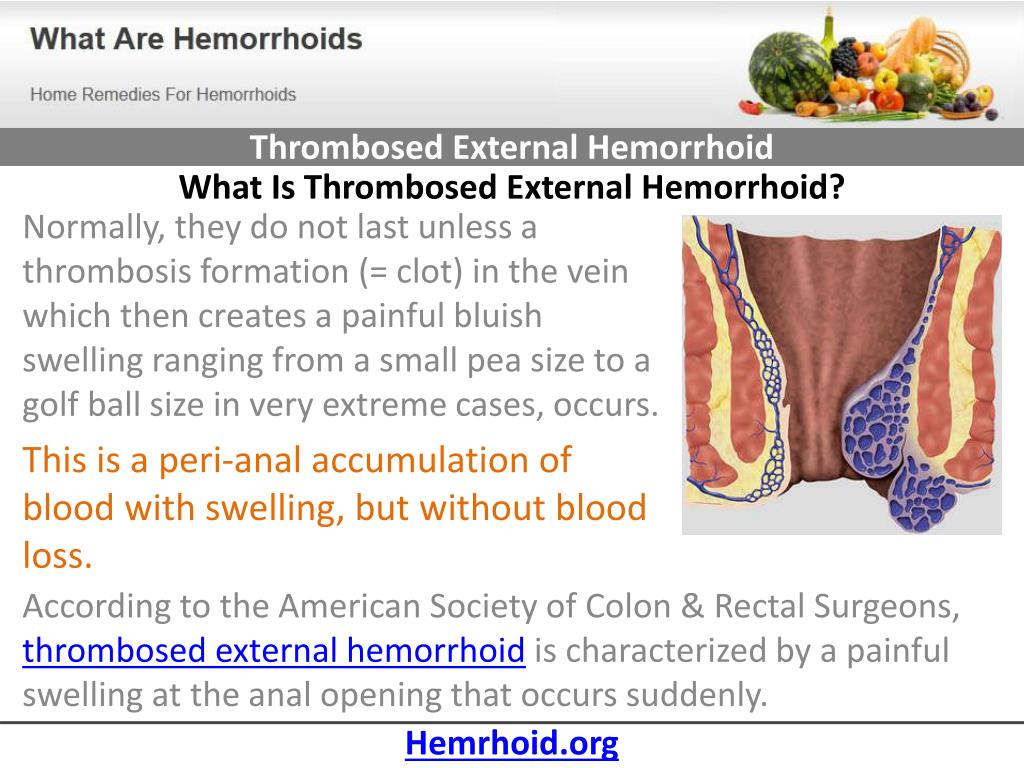 ”. 2018. Accessed October 11, 2018.
”. 2018. Accessed October 11, 2018.
Share this article:
Harvard Health Publishing. “Hemorrhoids and what to do about them.” October 2017. Accessed June 27, 2018.
Family Doctor. “Hemorrhoids.” November 2017. Accessed June 27, 2018.
MedlinePlus. “Hemorrhoids.” May 2017. Accessed June 27, 2018.
The National Institute of Diabetes and Digestive and Kidney Diseases. “Symptoms & Causes of Proctitis.” August 2016. Accessed June 27, 2018.
American Family Physician. “Hemorrhoids.” July 2011. Accessed June 27, 2018.
The Association of Coloproctology of Great Britain and Ireland. “Pruritus ani (tchy bottom).” Accessed June 27, 2018.
The American Society of Colon and Rectal Surgeons. “Hemorrhoids: Expanded Version.” Accessed June 27, 2018.
MedicineNet. “Hemorrhoids Causes, Symptoms, and Treatment Relief.” September 2017. Accessed June 27, 2018.
US National Library of Medicine.
 “The acute management of haemorrhoids.” October 2014. Accessed June 27, 2018.
“The acute management of haemorrhoids.” October 2014. Accessed June 27, 2018.The American Society of Colon and Rectal Surgeons. “Rectal Prolapse.” Accessed June 27, 2018.
US National Library of Medicine. “Hemorrhoids.” March 2011. Accessed June 27, 2018.
Healthline. “Everything You Should Know About Thrombosed Hemorrhoids.” June 2017. Accessed June 27, 2018.
Healthline. “How Are Anal Skin Tags Identified and Removed?” December 2017. Accessed June 27, 2018.
American Cancer Society. “What Is Anal Cancer?” November 2017. Accessed June 27, 2018.
US National Library of Medicine. “Hemorrhoids in pregnancy.” February 2008. Accessed June 27, 2018.
The American Society of Colon and Rectal Surgeons. “Anal Fissure.” Accessed June 27, 2018.
The American Society of Colon and Rectal Surgeons. “Abscess and Fistula Expanded Information.” Accessed June 27, 2018.
The American Society of Colon and Rectal Surgeons.
 “Polyps of the Colon and Rectum.” Accessed June 27, 2018.
“Polyps of the Colon and Rectum.” Accessed June 27, 2018.National Cancer Institute. “Rectal Cancer Treatment.” June 2018. Accessed June 27, 2018.
National Cancer Institute. “Colon Cancer Treatment.” May 2018. Accessed June 27, 2018.
American Cancer Society. “Colorectal Cancer Signs and Symptoms.” February 2018. Accessed June 27, 2018.
Centers for Disease Control and Prevention. “Colorectal Cancer Screening Tests.” 20 June, 2018. Accessed November 12, 2018.
Centers for Disease Control and Prevention. “Colorectal Cancer: What Should I Know About Screening?.” 20 June, 2018. Accessed November 12, 2018.
American Cancer Society. “American Cancer Society Updates Colorectal Cancer Screening Guideline.” May 30, 2018. Accessed: November 12, 2018.
Cancer Research UK. “Symptoms of anal cancer.” June 2016. Accessed June 27, 2018.
National Cancer Institute. “Anal Cancer Treatment.
 ” January 2018. Accessed June 27, 2018.
” January 2018. Accessed June 27, 2018.US National Library of Medicine. “Common Anorectal Disorders.” May 2014. Accessed June 27, 2018.
NHS Choices. “Anal fistula.” June 2016. Accessed June 27, 2018.
MedlinePlus. “Pinworms.” March 2016. Accessed June 27, 2018.
The American Society of Colon and Rectal Surgeons. “Pruritis Ani Expanded Version.” Accessed June 27, 2018.
Medscape. “Proctitis and Anusitis” June 2018. Accessed June 27, 2018.
The American Society of Colon and Rectal Surgeons. “Hemorrhoids.”. Accessed June 27, 2018.
Patient. “Lumps.” October 2015. Accessed October 10, 2018.
Bupa. “Piles (haemorrhoids).” June 2018. Accessed October 10, 2018.
Complications of hemorrhoids – Health Clinic 365 Yekaterinburg
Anemia. One of the most common complications of hemorrhoids . Chronic blood loss from hemorrhoids can lead to anemia, which reduces the number of healthy red blood cells that can carry oxygen to the body’s cells, leading to symptoms such as fatigue and weakness. With severe anemia, dizziness and fainting may occur.
With severe anemia, dizziness and fainting may occur.
Infringement of internal hemorrhoids. If the blood flow to the internal hemorrhoids is reduced, the node can become “pinched”, causing severe pain and tissue death (gangrene). When straining during defecation (stool discharge), the nodes fall out of the rectum, then the edema of the prolapsed nodes develops. Spasm of the sphincter of the rectum (the muscle that closes the entrance to the rectum) increases edema, causes additional stagnation of blood in the rectal plexus of veins and thrombosis of external hemorrhoids. At the same time, there are complaints of sharp arching pain in the anus, swelling, sensation of a foreign body. When the node dies, discharge from the rectum with an unpleasant odor and difficulty in defecation are noted, and there may be bleeding.
Thrombosis of external hemorrhoids usually occurs after errors in diet, physical activity. The patient feels a painful foreign body in the anus (anus) the size of a grape. There are sharp pains in the anus, which can intensify even with slight physical exertion, coughing.
There are sharp pains in the anus, which can intensify even with slight physical exertion, coughing.
Infectious complications – perianal abscess and paraproctitis. There are small glands that open inside the anus, they produce a special lubricant, helping the passage of feces through the rectum. With hemorrhoids, there is a chronic violation of the blood supply, both in the area of \u200b\u200bthese glands, and in the fatty tissue around the rectum. Infection with microorganisms can occur if the opening of one of these glands becomes blocked as a result of inflammation, forming a perianal (around the anus) abscess. Then the infection spreads from the inflamed gland to the fatty tissue surrounding the rectum, and paraproctitis occurs. Paraproctitis is an acute or chronic inflammation of the perirectal fatty tissue, an accumulation of pus in the deep tissues surrounding the rectum. Both of these processes require immediate treatment. Delay in treatment can lead to serious deterioration and unnecessary complications.
Symptoms of paraproctitis:
Pain in the anus or buttocks
Fever
Sensation of a lump in the anal region
Painful spasms bowels
Pain in the lower abdomen
Fatigue
Swelling in the anus or buttocks
Night sweats
Some people are more likely to develop perirectal and perianal abscesses, including those with the following medical problems:
Diabetes
AIDS or HIV infection with low white blood cell count
Crohn’s disease or ulcerative colitis.
Persons receiving drugs that suppress the body’s immune system, such as glucocorticosteroids (prednisolone, methylprednisolone), cancer chemotherapy drugs 07
Sigmoidoscopy
Symptoms of proctological diseases
Colonoscopy
Proctological operations
Anal fissure
Cryptitis
Anal papillitis
Acute paraproctitis
Chronic paraproctitis
Diverticulosis.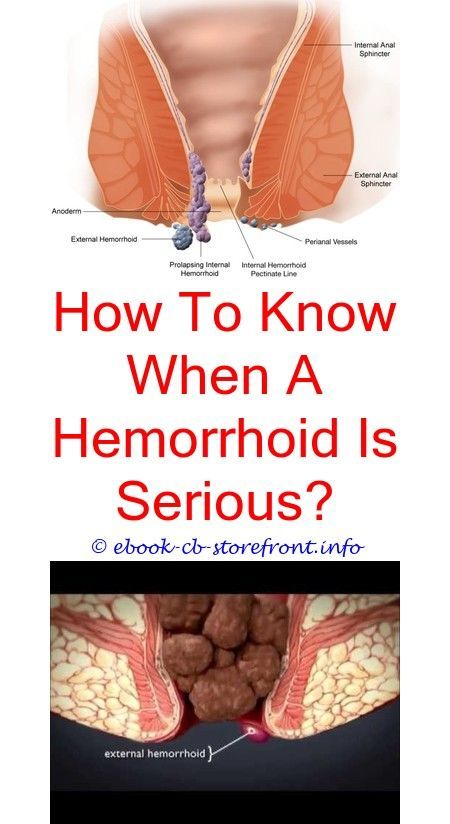 Diverticulitis
Diverticulitis
Crohn’s disease. Symptoms
Causes of Crohn’s disease
Crohn’s disease. Questions for the doctor
Diagnosis of Crohn’s disease
Treatment of Crohn’s disease
Complications of Crohn’s disease
Arthritis of Crohn’s disease
Osteoporosis of Crohn’s disease
Diseases of the liver and bile ducts of Crohn’s disease
Diseases of the eyes of Crohn’s disease
Skin diseases of Crohn’s disease at
Treatment of non-specific ulcerative colitis.
Diagnosis of UC.
Irritable bowel syndrome
Colon polyps
If you are over 50, it is better to talk about colonoscopy today than colon cancer tomorrow
Prevention of colon cancer
Anatomy of the large intestine
Pain and cramps in the anus
- Home org/ListItem”> Symptoms and diseases
- Pain and cramps in the anus 90 130
Pain and spasms in the anus are one of the most common symptoms that indicate a malfunction in the intestinal tract, namely, a problem in the anus and colon. Pain can be of different nature:
- Pain is sudden, local, intense, burning and directly related to defecation – then most likely it is an acute anal fissure.
- Constant pain in the anal passage most often indicates thrombosis of hemorrhoids, acute paraproctitis or rectal fistula.
- Pressing pain, sometimes associated with defecation, usually accompanies colitis, proctitis.
- Accompanying defecation dull, burning pain can cause incomplete fistula of the rectum, cryptitis, papillitis.
- Discomfort in the rectum and anus, itching, burning, stabbing pain, often combined with bleeding – such complaints are characteristic of hemorrhoids.

In any case, you should not make a diagnosis yourself. Pain in the anus is already a signal for you that you need immediate consultation with a doctor – proctologist.
The most important thing is to identify the CAUSE of the pain!
A proctologist treats diseases that cause pain in the anus. The clinic employs male and female proctologists. Our doctors are proctologists.
Make an appointment with a proctologist
I agree to the processing of personal data under the following conditions
* Mandatory field
- Diseases
- Diagnosis
- Treatment
- Causes
Do you feel pain in your anus?
This may be an alarming symptom of the following diseases:
- Hemorrhoids.
- Thrombosis of hemorrhoids.
- Anal fissures. Regular heavy discharge may indicate the presence of this disease.

- Anal polyps. Mucus or pus is also observed
It is necessary to start treatment, because the consequences can be unpredictable!
Diagnosis of any disease, proctological – is no exception, it is, first of all, an examination by a doctor. Based on what the doctor reveals during the examination, a diagnosis will be made and treatment will be prescribed. An examination by a proctologist at “Alan Clinic” gives a complete picture of your problem, since it is based on two pillars – the doctor’s experience and modern diagnostic equipment.
Comprehensive diagnostics in the Department of Proctology “Alan Clinic” includes:
- Digital rectal examination
- Hardware diagnostics
- Videoanoscopy
- Videorectoromanoscopy
- Doctor’s consultation with diagnosis.
Treatment of pain in the anus
Treatment is prescribed by a proctologist and carried out on the territory of the clinic, under the full control of the attending physician.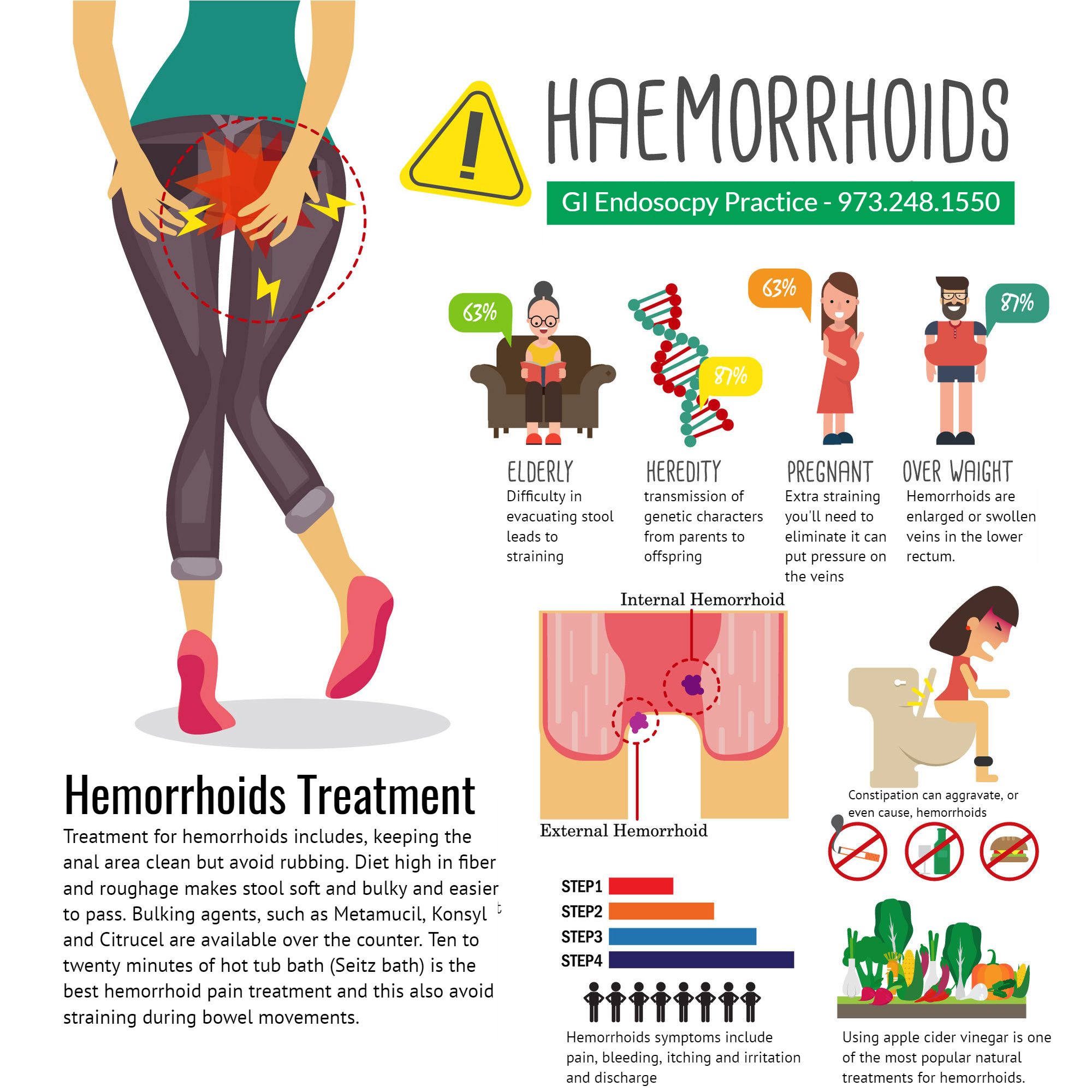

 Due to this, both types of hemorrhoid may produce a bad smell
Due to this, both types of hemorrhoid may produce a bad smell e., prolapse
e., prolapse Abscesses may sometimes cause fever
Abscesses may sometimes cause fever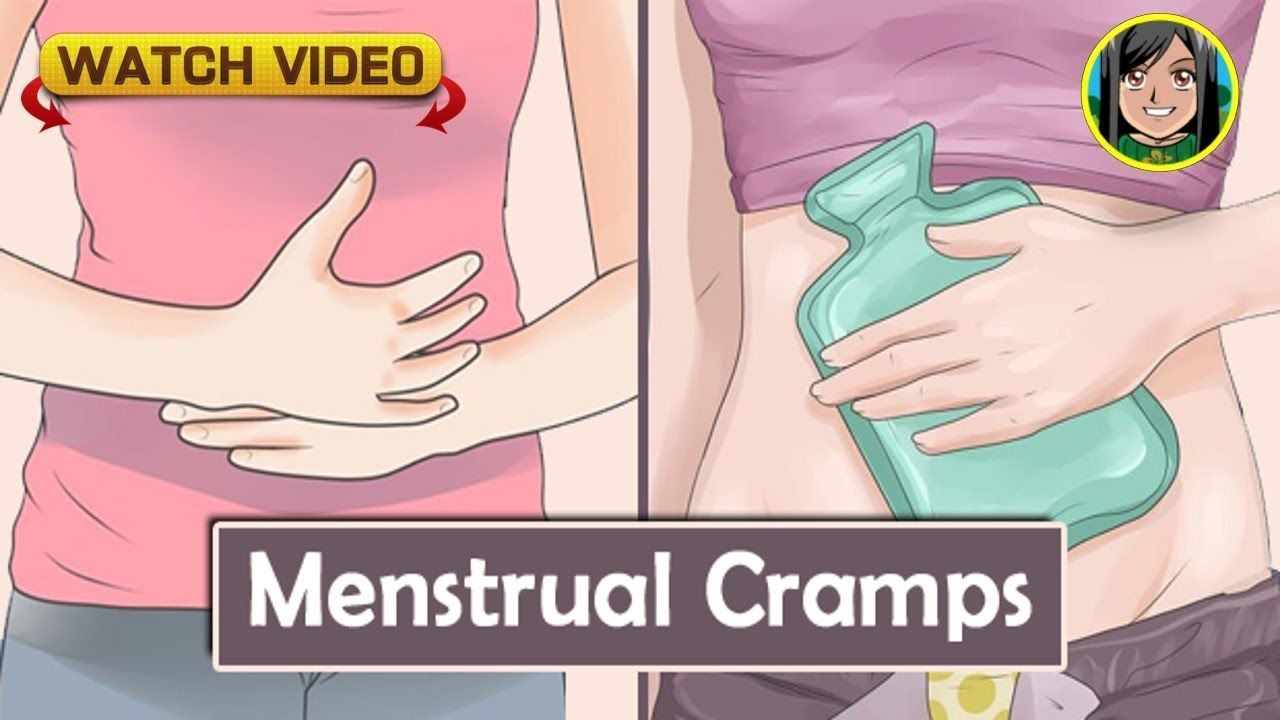 e., pruritus ani
e., pruritus ani “The acute management of haemorrhoids.” October 2014. Accessed June 27, 2018.
“The acute management of haemorrhoids.” October 2014. Accessed June 27, 2018. “Polyps of the Colon and Rectum.” Accessed June 27, 2018.
“Polyps of the Colon and Rectum.” Accessed June 27, 2018. ” January 2018. Accessed June 27, 2018.
” January 2018. Accessed June 27, 2018.
